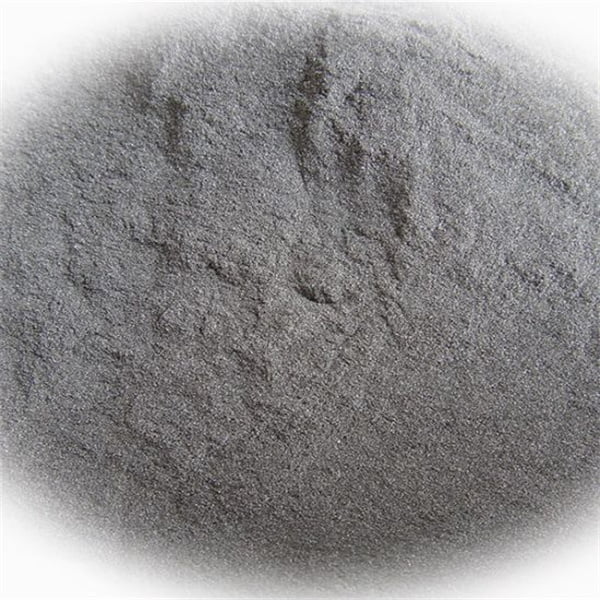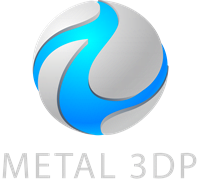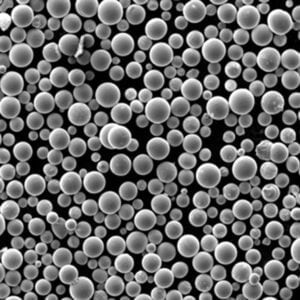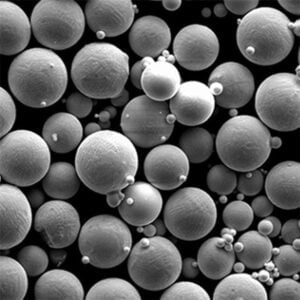Gas atomization is a specialized manufacturing process to produce fine metallic powders with precise composition and consistent particle sizes. The powders find application across automotive, aerospace, medical, and industrial sectors.
개요 gas atomized powder
표 1: Summary of the Gas Atomization Process
| 매개변수 | 세부 정보 |
|---|---|
| 원자재 | Metals like titanium, aluminum, steels, nickel alloys in form of ingots, electrodes or wire |
| 프로세스 원칙 | Melting feedstock and breaking up molten metal stream into fine droplets using high pressure gas jets |
| Atomizing Gases | Air, Nitrogen, Argon |
| Solidification Rate | 10^3 – 10^5 °C/s |
| Final Products | Spherical metal powders with controlled size ranging from 10 microns to 500 microns |
Controlled gas flow rates, precise atomization nozzles and specialized cooling designs enable the production of fine, spherical powders.

응용 Gas Atomized Powders
표 2: Major Application Areas of Gas Atomized Powder
| 산업 | 애플리케이션 예시 |
|---|---|
| 적층 제조 | 3D printing of aerospace and medical components |
| 분말 사출 성형 | Manufacture of small, complex metal parts with better mechanical properties |
| 용사 코팅 | Feedstock powder for wear and corrosion resistant coatings |
| 금속 사출 성형 | Small precision components like gears and cutting tool tips |
| Brazing Pastes | Nickel and aluminum based brazing filler metal powders |
The consistent powder characteristics like particle size distribution, purity and morphology make gas atomized powders a preferred feedstock across powder metallurgy processes.
Advantages Over Alternatives
표 3: Benefits of Gas Atomized Powder Over Other Types
| 매개변수 | 혜택 |
|---|---|
| 파티클 모양 | Highly spherical morphology gives excellent flowability |
| 입자 크기 제어 | Consistent microstructure which minimizes defects in finished components |
| Composition Consistency | Precise control over alloying elements ensures reliable mechanical properties |
| 비용 효율성 | Higher yields compared to water atomization with easier powder recovery |
| Product Customization | Flexibility to tailor powder composition and particle sizes as per application |
The combination of precision, consistency and flexibility makes gas atomization a versatile powder production technique at commercial scales.
일반 사양
표 4: Typical Specification Range for Gas Atomized Powders
| 매개변수 | 범위 |
|---|---|
| 재료 | Titanium, Aluminum, Steels, Nickel, Copper alloys |
| 입자 크기 | 10 to 500 μm |
| 입자 크기 분포 | Tight distribution with SG > 0.9 |
| 산소 함량 | 100 – 1000 ppm range |
| 질소 함량 | < 100 ppm |
| 모양 | Highly spherical > 80% |
| 겉보기 밀도 | Up to 65% of pure metal |
The properties can be tailored over a wide range as per intended usage across industries.
장점과 단점
표 5: Advantages and Limitations of Gas Atomization
| 장점 | 단점 |
|---|---|
| Consistent particle characteristics | Limitations on alloying additions like reactive elements |
| Cost effective for higher volumes | Initial equipment capital cost relatively high |
| Wide range of alloy families | Handling of fine pyrophoric powders requires care |
| Scale-up to tonnage quantities feasible | Post-processing often required to remove satellites and fines |
Despite growing expertise globally, gas atomized powder still requires significant process development and qualification efforts by end-users to apply successfully for niche applications.
자주 묻는 질문
Q: Does gas atomization allow single crystal powder production?
A: Very challenging – the rapid solidification rates create fine grained microstructures. Specialized variants like Electrode Induction-melting Gas Atomization (EIGA) can yield some fraction of single crystal particles.
Q: What is the typical nitrogen content range for gas atomized titanium powder?
A: With best practices, N2 levels of 100-500 ppm can be achieved for gas atomized titanium powder. This expands AM capability versus other variants with higher oxygen/nitrogen which negatively impacts mechanical performance.
Q: What is the key difference between gas and water atomized metal powders?
A: Gas atomization allows better particle shape and size control. Water atomization yields faster cooling rates but experiences more oxidation and satellite particle issues during powder production and recovery.











